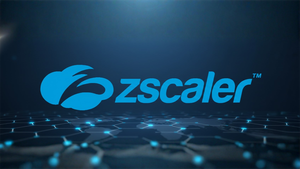In RATIONALE 309, tislelizumab in combination with chemotherapy significantly prolonged progression-free survival for patients, with survival benefit observed across patient subgroups
The safety profile of the combination was consistent with known risks of each treatment agent
Following the positive topline at an interim analysis, a supplemental biologics license application in this indication is currently under review in China
BeiGene (NASDAQ: BGNE; HKEX: 06160), a global, science-driven biotechnology company focused on developing innovative and affordable medicines to improve treatment outcomes and access for patients worldwide, today announced results from the RATIONALE 309 trial of tislelizumab versus placebo in combination with chemotherapy as a first-line treatment for patients with recurrent or metastatic nasopharyngeal cancer (RM-NPC) at the European Society for Medical Oncology Immuno-Oncology (ESMO I-O) Congress 2021, taking place on December 8-11, 2021.
“We are pleased that tislelizumab in combination with chemotherapy demonstrated a statistically significant progression-free survival benefit for patients with RM-NPC over chemotherapy,” commented Yong (Ben) Ben, M.D., Chief Medical Officer, Immuno-Oncology at BeiGene. “A filing based on these results is currently under review in China, where NPC as an endemic disease remains a significant unmet medical need. We look forward to continued discussions with the health authority and are working to bring this important immunotherapy to patients in China as soon as we can.”
In August 2021, the Center for Drug Evaluation (CDE) of the China National Medical Products Administration (NMPA) accepted a supplement Biologics License Application (sBLA) for tislelizumab in combination with chemotherapy as a first-line treatment for patients with RM-NPC based on results from the interim analysis of the RATIONALE 309 trial.
Results from RATIONALE 309: Tislelizumab vs. Placebo in Combination with Chemotherapy in First-Line RM-NPC
Proffered Paper: 121O
RATIONALE 309 is a multicenter, randomized, double-blind, placebo-controlled Phase 3 clinical trial (NCT03924986) designed to evaluate the efficacy and safety of tislelizumab combined with gemcitabine and cisplatin (Arm A) versus placebo combined with gemcitabine and cisplatin (Arm B) as a first-line treatment for patients with RM-NPC. The primary endpoint of the trial is progression-free survival (PFS) in the intent-to-treat (ITT) population as assessed by an independent review committee (IRC) per RECIST v1.1 criteria; secondary endpoints include IRC-assessed overall response rate (ORR), IRC-assessed duration of response (DoR), overall survival (OS), investigator-assessed PFS, time to second objective disease progression (PFS2), and safety. A total of 263 patients were enrolled in the trial, with 131 and 132 randomized to Arm A and Arm B, respectively, with balanced baseline characteristics between both arms.
“In the RATIONALE 309 trial, the addition of tislelizumab to chemotherapy significantly prolonged PFS for previously untreated patients with RM-NPC, an aggressive head and neck cancer prevalent in Asia, with consistent survival benefit across patient subgroups. Safety results in both arms remained similar to known risks and no new safety signals were identified. The promising results support the potential of tislelizumab in combination with chemotherapy as a new standard of care in China for the first-line treatment of RM-NPC,” commented Yunpeng Yang, M.D., Professor at Sun Yat-sen University Cancer Center and principal investigator of the study.
As of March 26, 2021, with a median follow-up time of 10.0 months, RATIONALE 309 achieved the primary endpoint at the interim analysis, with the combination of tislelizumab and chemotherapy demonstrating a statistically significant improvement in PFS, compared to the combination of placebo and chemotherapy, per IRC assessment. Efficacy results included:
- The median PFS was 9.2 months (95% CI: 7.6, 10.1) in Arm A, compared to 7.4 months (95% CI: 5.6, 7.5) in Arm B, with a stratified hazard ratio (HR) of 0.52 (95% CI: 0.38, 0.73) and stratified log-rank p < 0.0001, as assessed by IRC;
- The PFS rate at six, nine, and 12 months was 66.1% (95% CI 56.9, 73.8), 51.0% (95% CI: 41.1, 60.1), and 35.7% (95% CI: 25.2, 46.4) in Arm A, compared to 53.0% (95% CI: 43.4, 61.8), 21.6% (95% CI: 13.5, 30.9), and 12.2% (95% CI: 5.6, 21.4) in Arm B, as assessed by IRC;
- The median PFS was 9.8 months (95% CI: 7.8, 11.9) in Arm A, compared to 7.6 months (95% CI: 6.6, 7.8) in Arm B, with a stratified HR of 0.54 (95% CI: 0.38, 0.76), as assessed by investigators;
- Consistent PFS benefit was observed in most subgroups, including disease status, baseline liver metastases, and gender;
- The ORR and complete response (CR) rate were 69.5% and 16.0% in Arm A, compared to 55.3% and 6.8% in Arm B, as assessed by IRC; and
- The median DoR was 8.5 months (95% CI: 6.5, NE), compared to 6.1 months (95% CI: 4.7, 6.2) as assessed by IRC.
The safety profile of tislelizumab and chemotherapy combination was manageable, consistent with known risks of each treatment agent. Safety results included:
- All patients (100%) in Arm A experienced at least one treatment-emergent adverse event (TEAE) of any grade, with the most common (≥20.0%) being anemia, decreased white blood cell count, decreased neutrophil count, nausea, decreased platelet count, decreased appetite, vomiting, constipation, leukopenia, neutropenia, rash, hypothyroidism, increased alanine aminotransferase (ALT), hyponatremia, increased blood creatinine, increased aspartate aminotransferase (AST), malaise, and pyrexia;
- In comparison, 131 patients (99.2%) in Arm B experienced at least one TEAE of any grade, with the most common (≥20.0%) being anemia, nausea, decreased white blood cell count, decreased platelet count, decreased neutrophil count, vomiting, decreased appetite, constipation, leukopenia, neutropenia, hyponatremia, malaise, hypokalemia, rash, increased AST, and hypoalbuminemia;
- Grade ≥3 TEAEs were reported in 106 patients (80.9%) in Arm A, compared to 108 patients (81.8%) in Arm B;
- Serious TEAEs were reported in 36 patients (27.5%) in Arm A, compared to 44 patients (33.3%) in Arm B;
- TEAEs leading to permanent treatment discontinuation and death occurred in 2 patients (1.5%) and 5 patients (3.8%), respectively, in Arm A, compared to 3 patients (2.3%) and 2 patients (1.5%), respectively, in Arm B; and
- In Arm A, 24 patients (18.3%) experienced at least one immune-mediated TEAE of any grade, including 3 patients (2.3%) reporting Grade ≥3 events.
About Nasopharyngeal Cancer
Nasopharyngeal cancer (NPC) is a malignant, squamous cell carcinoma which arises from the epithelial cells of the nasopharynx, most commonly originating in the pharyngeal recess (the fossa of Rosenmüller).1 There were an estimated 62,555 new cases of NPC in China in 2020, accounting for 46.8 percent of the worldwide incidence.2 Despite the heavy public health burden of NPC in southern China and other endemic areas, relatively little is known about the etiology and prevention of NPC.3 The major risk factors for NPC are genetic predisposition, Epstein-Barr virus (EBV) infection, and consumption of salt-preserved food.4 The median overall survival rate is about 20 months in advanced NPC;5 however, progressively worsening prognoses falling to a three-year survival of 7-40% were reported in patients with recurrent or metastatic NPC, indicating a high medical unmet need for more effective treatment.6,7,8
About Tislelizumab
Tislelizumab (BGB-A317) is a humanized IgG4 anti-PD-1 monoclonal antibody specifically designed to minimize binding to FcγR on macrophages. In pre-clinical studies, binding to FcγR on macrophages has been shown to compromise the anti-tumor activity of PD-1 antibodies through activation of antibody-dependent macrophage-mediated killing of T effector cells. Tislelizumab is the first drug from BeiGene’s immuno-oncology biologics program and is being developed internationally as a monotherapy and in combination with other therapies for the treatment of a broad array of both solid tumor and hematologic cancers.
The China National Medical Products Administration (NMPA) has approved tislelizumab in five indications, including full approval for first-line treatment of patients with advanced squamous non-small cell lung cancer (NSCLC) in combination with chemotherapy and for first-line treatment of patients with advanced non-squamous NSCLC in combination with chemotherapy. NMPA also granted conditional approval for the treatment of patients with classical Hodgkin’s lymphoma (cHL) who received at least two prior therapies, for the treatment of patients with locally advanced or metastatic urothelial carcinoma (UC) with PD-L1 high expression whose disease progressed during or following platinum-containing chemotherapy or within 12 months of neoadjuvant or adjuvant treatment with platinum-containing chemotherapy, and for the treatment of patients with hepatocellular carcinoma (HCC) who have received at least one systemic therapy. Full approval for these indications is contingent upon results from ongoing randomized, controlled confirmatory clinical trials.
In addition, four supplemental Biologics License Applications for tislelizumab are under review by the Center for Drug Evaluation (CDE) of the NMPA, including as second- or third-line treatment of patients with locally advanced or metastatic NSCLC who progressed on prior platinum-based chemotherapy, for patients with previously treated, locally advanced unresectable or metastatic microsatellite instability-high (MSI-H) or mismatch repair-deficient (dMMR) solid tumors, for the treatment of patients with locally advanced or metastatic esophageal squamous cell carcinoma (ESCC) who have disease progression following or are intolerant to first-line standard chemotherapy, and for first-line treatment of patients with recurrent or metastatic nasopharyngeal cancer (NPC).
In the U.S., a Biologics License Application for tislelizumab as a treatment for patients with unresectable recurrent locally advanced or metastatic ESCC after prior systemic therapy is currently under review by the U.S. Food and Drug Administration with a PDUFA target action date of July 12, 2022.
BeiGene has initiated or completed 17 potentially registration-enabling clinical trials in China and globally, including 13 Phase 3 trials and four pivotal Phase 2 trials.
In January 2021, BeiGene and Novartis entered into a collaboration and license agreement granting Novartis rights to develop, manufacture, and commercialize tislelizumab in North America, Europe, and Japan.
Tislelizumab is not approved for use outside of China.
About the Tislelizumab Clinical Program
Clinical trials of tislelizumab include:
- Phase 3 trial comparing tislelizumab with docetaxel in the second- or third-line setting in patients with NSCLC (NCT03358875);
- Phase 3 trial comparing tislelizumab to salvage chemotherapy in patients with relapsed or refractory classical Hodgkin Lymphoma (cHL; NCT04486391);
- Phase 3 trial in patients with locally advanced or metastatic urothelial carcinoma (NCT03967977);
- Phase 3 trial of tislelizumab in combination with chemotherapy versus chemotherapy as first-line treatment for patients with advanced squamous NSCLC (NCT03594747);
- Phase 3 trial of tislelizumab in combination with chemotherapy versus chemotherapy as first-line treatment for patients with advanced non-squamous NSCLC (NCT03663205);
- Phase 3 trial of tislelizumab in combination with platinum-based doublet chemotherapy as neoadjuvant treatment for patients with NSCLC (NCT04379635);
- Phase 3 trial of tislelizumab combined with platinum and etoposide versus placebo combined with platinum and etoposide in patients with extensive-stage small cell lung cancer (NCT04005716);
- Phase 3 trial comparing tislelizumab with sorafenib as first-line treatment for patients with hepatocellular carcinoma (HCC; NCT03412773);
- Phase 2 trial in patients with previously treated unresectable HCC (NCT03419897);
- Phase 2 trial in patients with locally advanced or metastatic urothelial bladder cancer (NCT04004221);
- Phase 3 trial comparing tislelizumab with chemotherapy as second-line treatment for patients with advanced esophageal squamous cell carcinoma (ESCC; NCT03430843);
- Phase 3 trial of tislelizumab in combination with chemotherapy as first-line treatment for patients with ESCC (NCT03783442);
- Phase 3 trial of tislelizumab versus placebo in combination with chemoradiotherapy in patients with localized ESCC (NCT03957590);
- Phase 3 trial of tislelizumab combined with chemotherapy versus placebo combined with chemotherapy as first-line treatment for patients with gastric cancer (NCT03777657);
- Phase 2 trial of tislelizumab in patients with relapsed or refractory cHL (NCT03209973);
- Phase 2 trial in patients with MSI-H/dMMR solid tumors (NCT03736889); and
- Phase 3 trial of tislelizumab combined with chemotherapy versus placebo combined with chemotherapy as first-line treatment in patients with nasopharyngeal cancer (NCT03924986).
BeiGene Oncology
BeiGene is committed to advancing best and first-in-class clinical candidates internally or with like-minded partners to develop impactful and affordable medicines to patients across the globe. We have a growing R&D team of approximately 2,750 colleagues dedicated to advancing more than 70 ongoing clinical trials involving more than 14,000 patients and healthy volunteers. Our expansive portfolio is directed by a predominantly internalized clinical development team supporting trials in more than 45 countries and regions. Hematology-oncology and solid tumor targeted therapies and immuno-oncology are key focus areas for the Company, with both mono- and combination therapies prioritized in our research and development. The Company currently markets three medicines discovered and developed in our labs: BTK inhibitor BRUKINSA in the United States, China, Canada, and additional international markets; and non-FC-gamma receptor binding anti-PD-1 antibody tislelizumab and PARP inhibitor pamiparib in China.
BeiGene also partners with innovative companies who share our goal of developing therapies to address global health needs. We commercialize a range of oncology medicines in China licensed from Amgen, Bristol Myers Squibb, and EUSA Pharma. We also plan to address greater areas of unmet need globally through our collaborations including with Amgen, Bio-Thera, Mirati Therapeutics, Seagen, and Zymeworks. BeiGene has also entered into a collaboration with Novartis granting Novartis rights to develop, manufacture, and commercialize tislelizumab in North America, Europe, and Japan.
About BeiGene
BeiGene is a global, science-driven biotechnology company focused on developing innovative and affordable medicines to improve treatment outcomes and access for patients worldwide. With a broad portfolio of more than 40 clinical candidates, we are expediting development of our diverse pipeline of novel therapeutics through our own capabilities and collaborations. We are committed to radically improving access to medicines for two billion more people by 2030. BeiGene has a growing global team of over 7,700 colleagues across five continents. To learn more about BeiGene, please visit www.beigene.com and follow us on Twitter at @BeiGeneGlobal.
Forward-Looking Statements
This press release contains forward-looking statements within the meaning of the Private Securities Litigation Reform Act of 1995 and other federal securities laws, including statements regarding BeiGene’s plans for the development and potential regulatory approval and commercialization in China of tislelizumab in NPC, the potential of tislelizumab in combination with chemotherapy as a new standard of care in China for the first-line treatment of RM-NPC, ongoing and future clinical development and potential regulatory approvals of tislelizumab in the United States, China and elsewhere, and BeiGene’s plans, commitments, aspirations and goals under the headings “BeiGene Oncology” and “About BeiGene”. Actual results may differ materially from those indicated in the forward-looking statements as a result of various important factors, including BeiGene's ability to demonstrate the efficacy and safety of its drug candidates; the clinical results for its drug candidates, which may not support further development or marketing approval; actions of regulatory agencies, which may affect the initiation, timing and progress of clinical trials and marketing approval; BeiGene's ability to achieve commercial success for its marketed medicines and drug candidates, if approved; BeiGene's ability to obtain and maintain protection of intellectual property for its medicines and technology; BeiGene's reliance on third parties to conduct drug development, manufacturing and other services; BeiGene’s limited experience in obtaining regulatory approvals and commercializing pharmaceutical products and its ability to obtain additional funding for operations and to complete the development and commercialization of its drug candidates and achieve and maintain profitability; the impact of the COVID-19 pandemic on the BeiGene’s clinical development, regulatory, commercial, and other operations, as well as those risks more fully discussed in the section entitled “Risk Factors” in BeiGene’s most recent quarterly report on Form 10-Q as well as discussions of potential risks, uncertainties, and other important factors in BeiGene's subsequent filings with the U.S. Securities and Exchange Commission. All information in this press release is as of the date of this press release, and BeiGene undertakes no duty to update such information unless required by law.
References
- Yu, M. C., & Yuan, J.-M. (2002). Epidemiology of nasopharyngeal carcinoma. Seminars in Cancer Biology, 12(6), 421–429. https://doi.org/10.1016/s1044579x02000858.
- Globocan 2020. Available at https://gco.iarc.fr/today/data/factsheets/populations/160-china-fact-sheets.pdf. Access July 2021.
- Wu, L., Li, C., & Pan, L. (2018). Nasopharyngeal carcinoma: A review of current updates. Experimental and Therapeutic Medicine, 15(4), 3687–3692. https://doi.org/10.3892/etm.2018.5878.
- Liu, Y.-T., Dai, J.-J., Xu, C.-H., Lu, Y.-K., Fan, Y.-Y., Zhang, X.-L., Zhang, C.-X., & Chen, Y.-M. (2012). Greater intake of fruit and vegetables is associated with lower risk of nasopharyngeal carcinoma in Chinese adults: A case-control study. Cancer Causes & Control: CCC, 23(4), 589–599. https://doi.org/10.1007/s10552-012-9923-z.
- Perri, F., (2019). Management of recurrent nasopharyngeal carcinoma: current perspectives. Onco Targets Ther, 12, 1583-1591. doi:10.2147/OTT.S188148.
- Li, J.-X., Huang, S.-M., Wen, B.-X., & Lu, T.-X. (2014). Prognostic factors on overall survival of newly diagnosed metastatic nasopharyngeal carcinoma. Asian Pacific Journal of Cancer Prevention: APJCP, 15(7), 3169–3173. https://doi.org/10.7314/apjcp.2014.15.7.3169.
- Toumi, N., Ennouri, S., Charfeddine, I., Daoud, J., & Khanfir, A. (2020). Prognostic factors in metastatic nasopharyngeal carcinoma. Brazilian Journal of Otorhinolaryngology. https://doi.org/10.1016/j.bjorl.2020.05.022.
- Xu, Y., Huang, T., Mao, M., Zhai, J., & Chen, J. (2020). Metastatic Patterns and Prognosis of de novo Metastatic Nasopharyngeal Carcinoma in the United States. The Laryngoscope. https://doi.org/10.1002/lary.28983.
View source version on businesswire.com: https://www.businesswire.com/news/home/20211210005022/en/
Contacts
BeiGene
Investor Contact
Gabrielle Zhou
+86 10-5895-8058
ir@beigene.com
Media Contact
Vivian Ni
+1 857-302-7596
media@beigene.com





